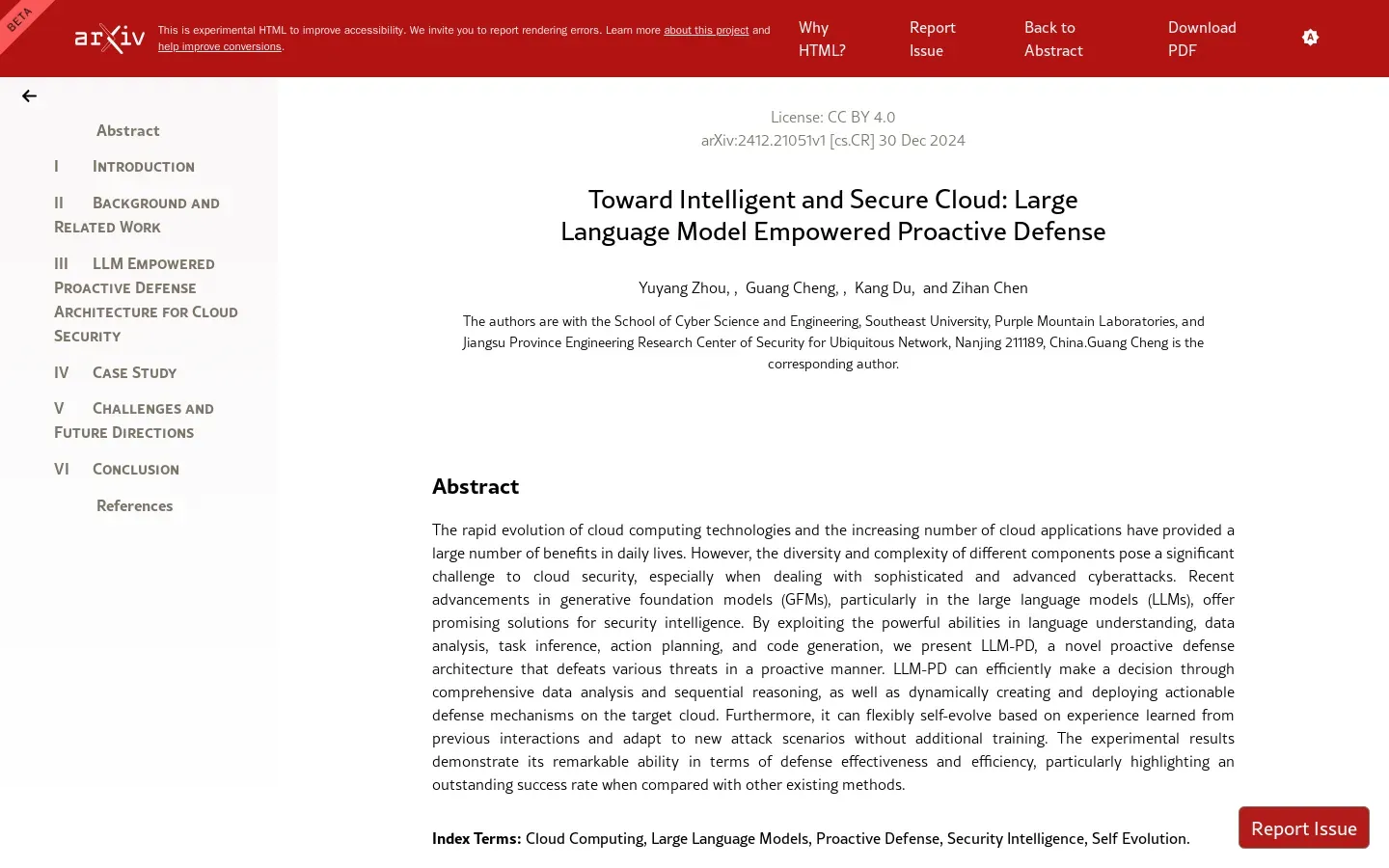
Proactive Defense Strategies for Cloud Cybersecurity Explored
/ 4 min read
Quick take - Researchers have introduced the LLM-PD architecture to enhance proactive defense mechanisms against service-oriented man-in-the-middle attacks in cloud environments, emphasizing the need for adaptive cybersecurity strategies that leverage advanced technologies like deep reinforcement learning and generative honeypots.
Fast Facts
-
Introduction of LLM-PD Architecture: Researchers developed the Large Language Model Proactive Defense (LLM-PD) to enhance proactive defense mechanisms against service-oriented man-in-the-middle (MitM) attacks in Kubernetes environments.
-
Mutation-Enabled Defense Strategy: The study emphasizes a robust defense strategy that utilizes mutation techniques to adapt and evolve security measures, making it harder for attackers to exploit vulnerabilities.
-
Integration of Advanced Technologies: The research highlights the benefits of combining deep reinforcement learning (DRL) and large language models (LLMs) to create intelligent, adaptive cybersecurity frameworks that improve threat intelligence sharing.
-
Performance and User Experience: Findings indicate that while security enhancements were achieved, system performance and user experience were maintained, ensuring practical applicability.
-
Future Research Directions: The study suggests further exploration into integrating mutation techniques with IoT security frameworks and enhancing task decomposition for more efficient threat inference in increasingly interconnected environments.
In the ever-evolving landscape of cybersecurity, where threats morph faster than organizations can adapt, researchers are turning to innovative strategies that push the boundaries of traditional defense mechanisms. One such approach is the development of Deep Reinforcement Learning (DRL) techniques for moving target defense. This methodology focuses on creating dynamic environments that continuously adjust to potential threats, thereby making it more challenging for attackers to exploit vulnerabilities. The concept is particularly relevant in cloud-native ecosystems like Kubernetes, where service-oriented man-in-the-middle (MitM) attacks pose significant risks.
A noteworthy advancement in this area is the pursuit of mutation-enabled proactive defense strategies aimed at countering MitM attacks specifically within Kubernetes environments. Researchers like S. Yang and colleagues have underscored the necessity for a robust framework that not only reacts to threats but anticipates them through intelligent mutation strategies. These strategies involve altering system states or configurations regularly, forcing adversaries to adapt continually—a tactic that could potentially deter even the most sophisticated attackers.
Generative honeypots represent another cutting-edge tool in the cybersecurity arsenal. Unlike traditional honeypots, which passively lure attackers into traps, generative honeypots actively generate deceptive environments that simulate real-world systems. This innovation allows for a deeper understanding of attacker behavior while simultaneously collecting critical intelligence without exposing actual systems to risk. The integration of such technologies could bolster defenses significantly in increasingly complex digital landscapes.
As cybersecurity challenges grow, cross-domain security applications become paramount. By leveraging insights from various sectors—such as finance, healthcare, and IoT—researchers aim to foster an intrinsic security framework that adapts across different domains. This integrated approach not only enhances threat detection capabilities but also streamlines incident response, ensuring that lessons learned in one area inform defenses in another.
Furthermore, the rise of explainable AI for cybersecurity is crucial in building trust and transparency around automated defense mechanisms. As organizations increasingly rely on machine learning algorithms to detect and mitigate threats, understanding how these systems arrive at their decisions becomes vital. Explainable AI allows practitioners to interpret model outputs, fostering greater confidence in automated systems and encouraging wider adoption across industries.
The concept of self-evolving security systems is gaining traction as well. These systems utilize advanced algorithms to learn from past incidents and continuously refine their defensive measures accordingly. Coupled with real-time threat intelligence sharing capabilities, they promise an agile response to emerging threats, ensuring organizations remain one step ahead of cybercriminals.
Yet, despite these advancements, research has identified several limitations and areas requiring further exploration. For instance, while the LLM-PD (Large Language Model Proactive Defense) architecture presents exciting possibilities for enhancing cloud security, its practical application still necessitates rigorous performance evaluation to ensure it does not compromise user experience or system functionality.
Moreover, integrating these advanced models with existing IoT security frameworks remains a challenge. The potential to enhance resilience in IoT and Industrial IoT (IIoT) environments through effective deployment strategies cannot be overlooked; however, it requires meticulous planning and execution.
Ultimately, the implications of these advancements underscore a pivotal shift toward a proactive, integrated, and adaptive approach to cybersecurity. As we look ahead, it’s clear that leveraging advanced technologies—like deep reinforcement learning and generative models—will be essential in fortifying defenses against an increasingly sophisticated threat landscape. The future of cybersecurity will not merely react but will anticipate and evolve alongside its adversaries, laying the groundwork for a more secure digital environment.



